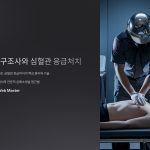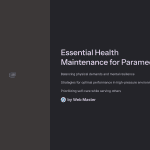Understanding how to prevent conflicts between emergency medical technicians (EMTs) and patients can lead to better care, smoother operations, and even fewer lawsuits. Learn practical strategies that not only protect you but also improve your professional rapport in high-stress environments.
In recent years, medical disputes involving EMTs have been on the rise, often fueled by miscommunication, lack of documentation, or misunderstanding of legal obligations. With the growing use of body cameras and increasing public scrutiny, EMTs must now be more prepared than ever to handle confrontations professionally. By applying clear procedures, maintaining calm under pressure, and understanding your legal protections and limits, you can significantly reduce your risk. This post offers real-world examples, updated protocols, and expert tips for creating a dispute-free response culture, especially in emergency settings.
1imz_ Understanding the Root of EMT-Related Disputes

disputes involving EMTs often stem from emotionally charged scenes where patients or family members may misinterpret actions as negligence or indifference. Common triggers include refusal of transport, patient restraint, perceived delay in care, and lack of communication. In these moments, legal vulnerability spikes—especially if the EMT’s decisions are not clearly documented or communicated.
To reduce risk, it’s critical to adopt a trauma-informed approach. This means recognizing the psychological state of the patient, de-escalating tensions through empathy, and always explaining procedures before taking action. Equally important is ensuring that all verbal exchanges are professional and, if possible, recorded through proper channels. Documentation is not just paperwork—it’s protection.
2imz_ Legal Boundaries Every EMT Should Know
EMTs operate in a unique legal space. Unlike physicians who work in controlled environments, EMTs often make split-second decisions in volatile settings. As such, legal protections like Good Samaritan laws, implied consent, and scope-of-practice rules become essential knowledge.
Understanding what you can’t do is just as important as knowing what you can. For instance, administering medication outside of protocol, ignoring a patient’s refusal of care, or transporting someone without proper consent can all be grounds for legal action. Regular training and scenario-based simulations can help EMTs stay sharp and within the legal lines.
3imz_ Communication Tactics That De-escalate Conflict
A large portion of medical conflicts can be avoided with skillful communication. EMTs should master non-threatening body language, active listening, and clear explanations of what’s happening and why. Avoid jargon, and aim for a calm, assertive tone. When patients or families feel heard and informed, their tendency to accuse or resist diminishes.
It’s also crucial to manage expectations early. Explain delays, procedures, and outcomes transparently. Use phrases like “We’re here to help,” or “I understand your concern, let me explain what we’re doing and why.” These can shift the tone of a situation from confrontational to cooperative.


The Role of Documentation in Dispute Prevention
Proper documentation is one of the strongest defenses against medical disputes. A clear, concise, and accurate patient care report (PCR) serves not only as a record of what happened but also as legal evidence in case of claims. Avoid vague statements and be as detailed as possible about the scene, patient condition, actions taken, and the rationale behind them.
Include direct quotes from the patient if they refuse care or display aggression. These notes can provide invaluable context if a case escalates. Use checklists or mobile apps designed for EMTs to streamline this process under time constraints.
5imz_ Learning from Case Studies and Past Incidents
Reviewing past disputes provides powerful insight into what not to do. Many EMT-related legal cases revolve around common missteps: failure to obtain informed consent, poor communication, inadequate record-keeping, or exceeding scope of practice. By analyzing such cases, teams can identify weak spots in their protocols and training programs.
For example, one notable case involved an EMT team transporting a conscious diabetic patient against their will, resulting in legal action for assault. The lesson? Patient autonomy must always be respected unless life-threatening impairment is evident and documented.
6imz_ Building a Culture of Conflict-Free Response
Ultimately, preventing disputes isn’t just about individual tactics—it’s about creating a team-wide culture of professionalism, empathy, and compliance. Leadership should encourage open dialogue, continuous education, and regular legal briefings. Create channels where EMTs can report near-miss disputes or questionable incidents without fear of retaliation.
Implementing reflective practice sessions after tough calls can help EMTs process emotions, share feedback, and refine their approach. Over time, this builds a workforce that is not only medically competent but also conflict-aware and legally safeguarded.






